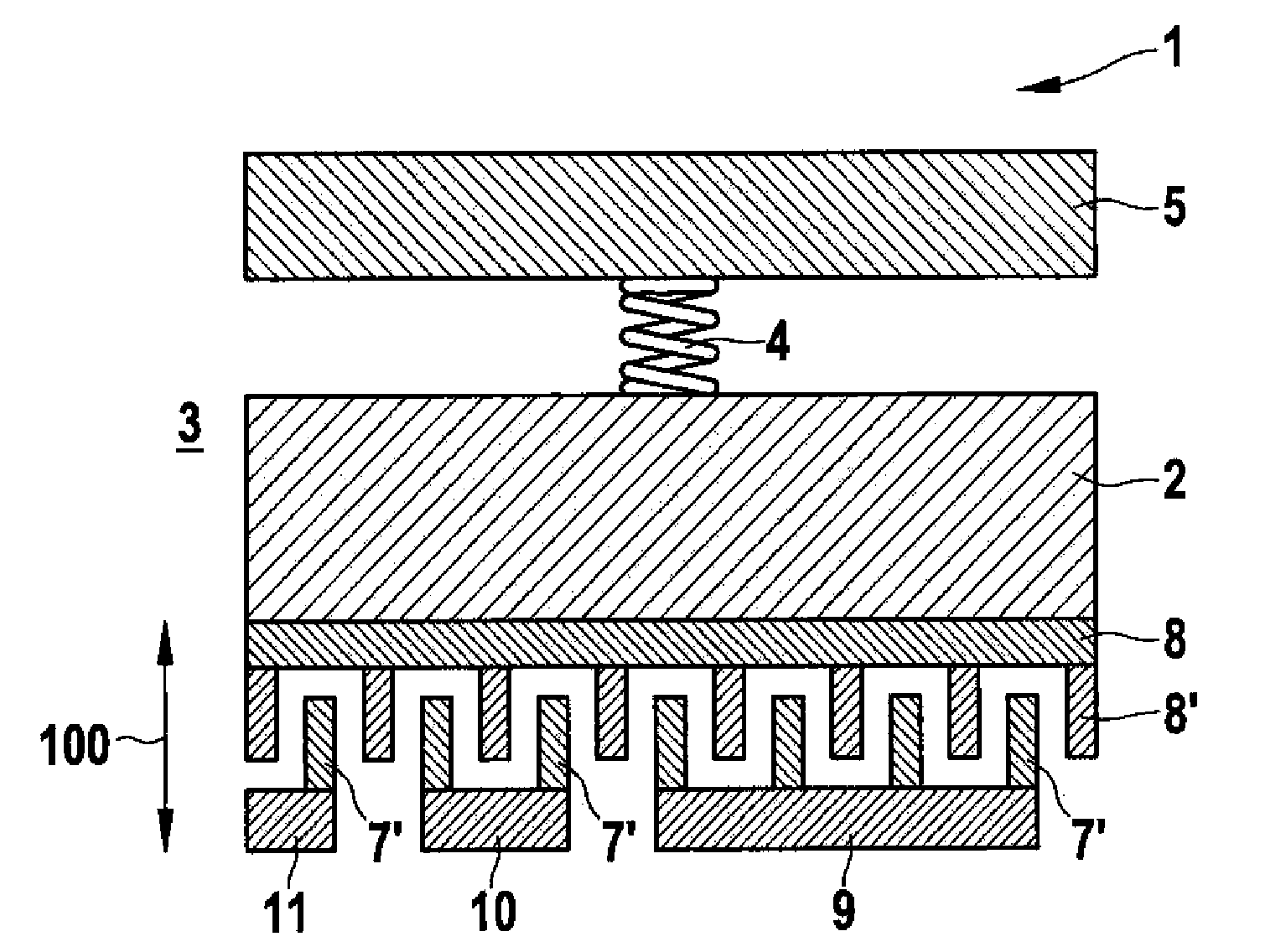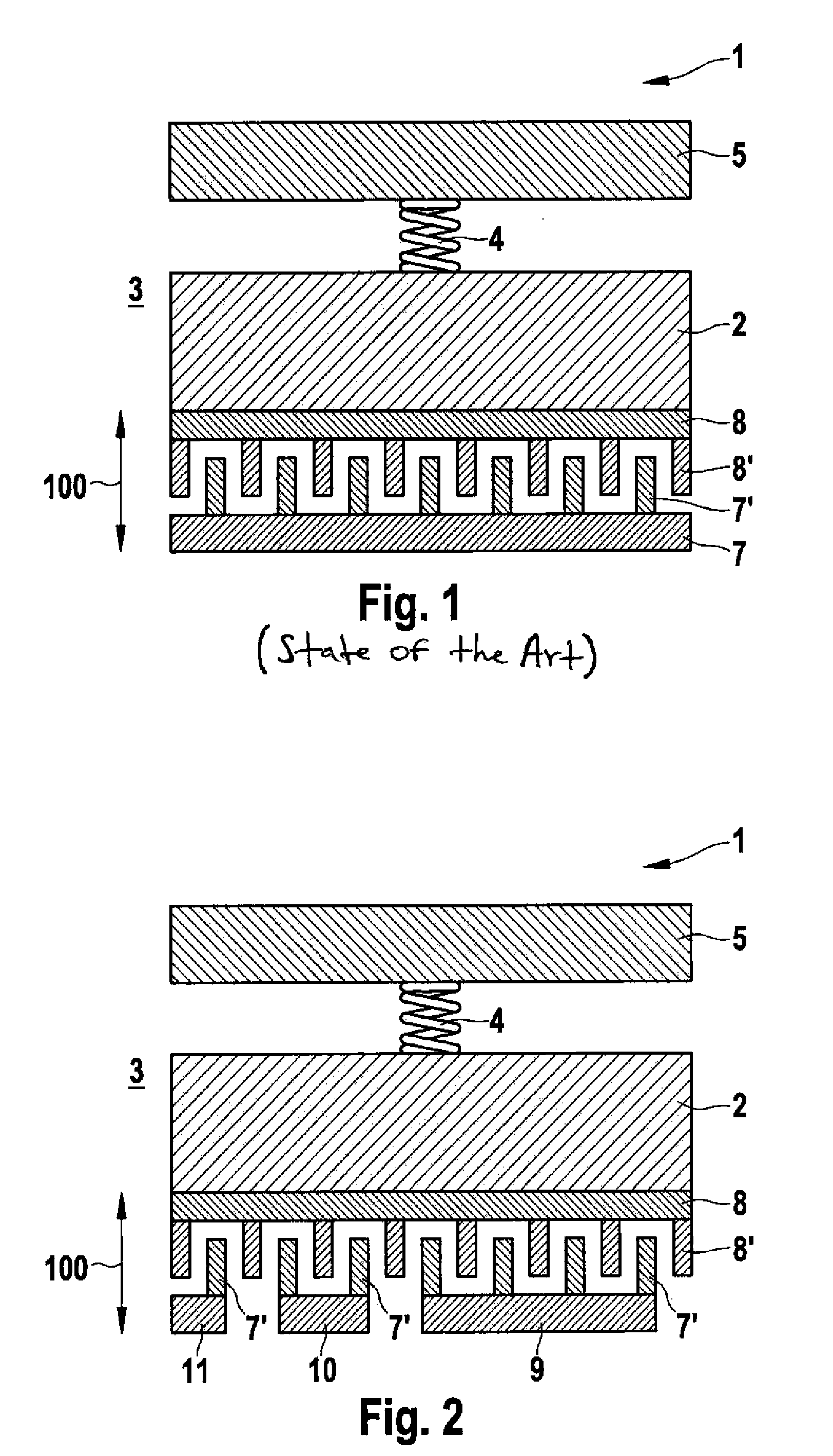Drive element and method for operating a drive element
a technology of drive elements and drive elements, applied in the direction of pulse techniques, instruments, and the details of the piezoelectric/electrostrictive device, can solve the problems of requiring a considerable amount of circuitry and achieving the effect of reducing the occurrence of interfering modes, low additional expenditure, and increasing or decreasing electrical capacitan
- Summary
- Abstract
- Description
- Claims
- Application Information
AI Technical Summary
Benefits of technology
Problems solved by technology
Method used
Image
Examples
Embodiment Construction
[0016]FIG. 1 shows a schematic plan view of a drive element 1 according to the related art, drive element 1 having a substrate 3 and a seismic mass 2. Seismic mass 2 is fastened to a retaining element 5 using a spring element 4 on substrate 3, so that seismic mass 2 is movable at least parallel to a main direction of motion 100 in relation to substrate 3. A stationary drive electrode 7 is situated on substrate 3, which is provided for the interaction with a counter-electrode 8 fastened to seismic mass 2. Counter-electrode 8 includes a plurality of counter-finger electrodes 8′ in this context and drive electrode 7 analogously includes a plurality of drive finger electrodes 7′. Counter-finger electrodes 8′ and drive finger electrodes 7′ are aligned essentially parallel to one another with respect to their main direction of extension, and parallel to main direction of motion 100, being situated parallel to substrate 3 and perpendicular to main direction of motion 100, offset to one ano...
PUM
 Login to View More
Login to View More Abstract
Description
Claims
Application Information
 Login to View More
Login to View More - R&D
- Intellectual Property
- Life Sciences
- Materials
- Tech Scout
- Unparalleled Data Quality
- Higher Quality Content
- 60% Fewer Hallucinations
Browse by: Latest US Patents, China's latest patents, Technical Efficacy Thesaurus, Application Domain, Technology Topic, Popular Technical Reports.
© 2025 PatSnap. All rights reserved.Legal|Privacy policy|Modern Slavery Act Transparency Statement|Sitemap|About US| Contact US: help@patsnap.com


